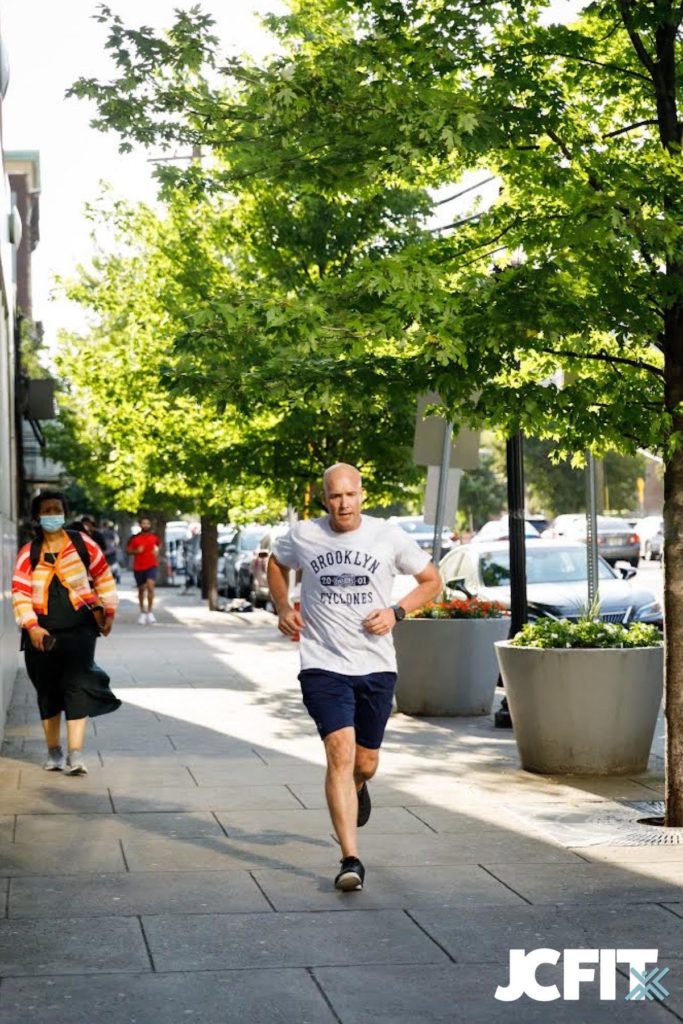Endurance athletes like to joke that racing season is year-round. And, it’s that time of year where the “Fall Glow Up” is here and it’s easy to catch the racing bug if you haven’t already. But, if every season is race season, what does that mean for other forms of training? Conversely, if you are a CrossFit regular, but have been itching to step out of the gym and onto a race course, when do you train for it? You have to pick what you want to focus on, right? Wrong! Endurance sports (like running, cycling, swimming, and triathlons) and CrossFit make complimentary training partners.
There is a reason why Games winner Mat Fraser enlisted the help of endurance coach Chris Hinshaw to help him build aerobic capacity. Endurance training increases our cardio capacity and lung efficiency to help make those WOD finish times faster. Likewise, there is a reason why marathoners, like Karly Wilson, credit CrossFit for keeping their training cycles injury free and helping them get closer to their lofty race PRs.
It’s not uncommon to hear someone say, “I need to take some time off to focus on race training.” But, done correctly, CrossFit can supplement training for a well-rounded approach. Simply put, endurance training and functional fitness work together synergistically to make you a much more effective athlete from a 360-degree perspective. Here’s how:

Functional Fitness Builds Aerobic Power
It all comes down to muscle ––muscle fibers that is! Our muscles are made up of slow-twitch (Type 1) and fast-twitch (Type 2) muscle fibers. Our slow-twitch, or endurance fibers, are responsible for sustaining movement for long periods of time. Endurance activities like running build our supply of slow-twitch fibers. Our fast twitch fibers provide bigger and more powerful forces, but for shorter durations and fatigue quickly. CrossFit builds our supply of fast twitch fibers and allows them to recruit slow twitch fibers. What does this mean? Improved aerobic power, more energy, and less fatigue. That goes a long way on a race course!
You Get Stronger
Despite what you may think, endurance sports are all full body sports. Functional fitness sessions focus on multi-joint movements, across several planes of motion, and target all of your major muscle groups to improve your range of motion, balance, coordination, and power, to make your full body stronger. Endurance athletes often ignore the importance of total body strength, honing their training on the specific sport at hand. However, an increase in overall muscular strength improves both form and efficiency.
It Makes You Faster
CrossFit trains your muscle groups in ways that strictly running, biking, or swimming does not. The key here is not limiting your training to one aspect to be a complete endurance athlete. Think of the daily metcons you encounter each week. Does anyone remember the last time there were 400M sprints programmed? The high intensity level of these workouts mimic the quality sessions often programmed in any endurance training program and works to improve your VO2 Max over time, shows you how to output more effort, and battle the mental discomfort of going hard and fast. What does this translate to? Moving faster with less effort.
Injury Prevention (Yes, really!)
It is a popular assumption that CrossFit leads to injury. While there is a risk of injury in any fitness activity, regular incorporation of functional fitness in your cross-training regimen can actually help prevent injury in endurance athletes. How does this work?
Injury is often the result of constant repetition of the same movement applied to the same muscle groups. CrossFit is a whole-body strength training program, and one of the best ways to prevent injury is to maintain a strong core and large muscle groups. With a functional fitness program, tendons and ligaments are trained and stimulated in a totally different manner than focusing solely on a singular sport (like running). This breaking up of the monotony of training one singular sport or movement improves the way your body moves with efficiency. It is why cross-training should be a key element to any race training plan or regimen.
The Takeaway:

The key to all of this is ‘big picture,’ right? As athletes, we shouldn’t limit our training to one aspect to be a complete endurance athlete or CrossFitter. Variation is key. Our bodies are a complete system, when one muscle is working, numerous others are firing to keep us balanced and able to perform the task at hand, and training those systems in a comprehensive manner can yield personal victories on a race course or in the gym.
Constant variation yields some of the greatest training effects. It builds stronger bodies that move better, toughens your mental game, and even staves off the boredom of training the same thing over and over again. So, how do you do both? It’s all about balance. If you are training for an endurance event, stick to your training plan. However, feel free to incorporate CrossFit a few times a week on your low mileage days. Swap a running WOD for a day that you have speedwork in your endurance programming. Make sure to take rest days.When balanced correctly, the relationship between CrossFit and endurance training may just get you to that next PR on the race course, or give you that extra edge in the gym!


